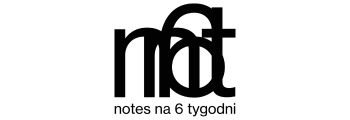MNK The Main Building
al. 3 Maja 1- Monday: closed
- Tuesday - Sunday: 10.00-18.00
Information and reservations on weekdays 9 a.m.- 4 p.m.
Director of the National Museum in Krakow
Deputy Director for Scientific Activities
Deputy Director for for Exhibition Activities
Deputy Director for Strategy and Communications
Deputy director for the Management
Chief Accountant
Chief Cataloguer of the National Museum in Krakow

The exhibition “Transformations. Modernity in the Third Polish Republic” is the last in the “4 x Modernity” series which has been organised at the National Museum in Krakow since 2021. As part of the exhibition, a wide variety of interpretations of modernity are shown in the fields of Polish art, architecture and design, beginning from the turn of the 19th and 20th centuries and continuing up to the present day. This fourth exhibition will illustrate the phenomenon of the revision of the concept of modernity and its titular transformation, which were contemporaneous with the social, cultural, and political transformations which took place after 1989. A consequence of these transformations was a multiplicity of creative attitudes and a reinterpretation of the code of modernity, which no longer presented a unified and cohesive image yet which brought about a dynamic and diverse polyphony of voices, characteristic of the cultural life of the Third Republic.
In the initial period after 1989, the point of departure for the process of transformation was Postmodernism, negating doctrines, breaking conventions, and manifesting itself in an unrestrained diversity of form, emblematic of the regained freedom of the early 1990s. Many of the basic assumptions of modernity were contested, undermining the notion of unlimited progress, the geometric and minimalist aesthetic, and the value of utopian thinking. Instead, inspiration was sought in that which did not fit into the modern canon, that which was marginalised, as well as in grotesque representations of the models of history and pop culture. A decade later, the arts scene was dominated by a new reading of Modernism characterised by functionalism and rationalism, optimalisation and economy of means. This attitude is the one which remains the most pronounced in Polish architecture and design to this day. It allows Polish creatives to add their contribution to international processes of modernisation associated with technological and material innovations, serving the needs of contemporary audiences. In artistic creativity, the avantgarde tradition has been discovered anew, expressed in, among other things, a return to abstraction and the surreal, as well as to social action, in line with the avantgarde conception of the social role of art.
In the years since the year 2000, the Modernist project has continued to be reconsidered and subjected to reflection. Although it is the result of the positively assessed civilisational advance of the country, it has also revealed opportunities and threats associated with this advance. Thanks to digitalisation and the automation of technology, designers find it easier to listen to and respond to individual needs, and to better perceive specific audiences, including their particular traits which had been passed over until now. Another phenomenon resulting from globalisation is the search for individuality and identity by drawing on history, on local traditions, but also by appreciating community. A dialogue with nature is another, increasingly important, issue. Buildings, public space, everyday items, services meet the needs not only of their direct consumers but also take into account the social and environmental context. Pieces of art are a commentary and reflection on the history of Modernism, including its alternate versions, as well as on the problems entailed by modernity. Art, design, and architecture both enter into a dialogue with and show a different perspective on such issues as technological progress, the shaping of private and public space, emancipation, and the relationship between man and nature. This polyphony is the bounty of modernity which we would like to show in this exhibition.
The exhibition will feature works of the most significant Polish artists active after 1989, for the majority of whom this will be their first time appearing at the National Museum in Krakow. The exhibition will not be of an encyclopaedic nature but will shed light on key problems of the times of transformation, presenting both works which are emblematic of the era of the Third Republic and less well-known pieces which have until now not received broader exposure in Polish museums, originating from public and private collections, or presented on loan from the artists themselves.
curatorial team: prof. Ph.D. Czesława Frejlich, Alicja Kilijańska, Joanna Regina Kowalska, Agata Małodobry, prof. Ph.D. Andrzej Szczerski, Dr. Katarzyna Uchowicz
coordination: Katarzyna Pawłowska
arrangement design: Magdalena Bujak




 promo
promo




















